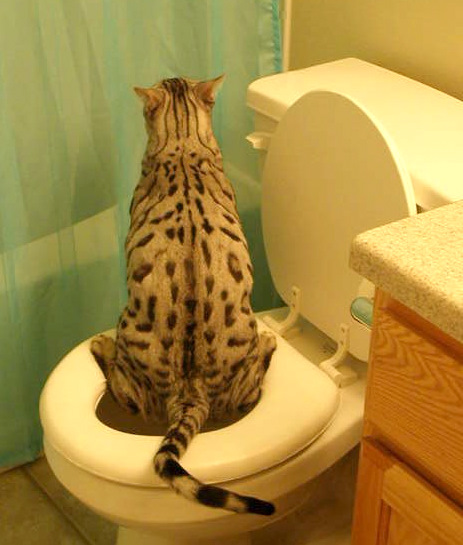Reasons Flushing Cat Poop Down Your Toilet Isn't a Good Idea - Advice for Proper Disposal
Reasons Flushing Cat Poop Down Your Toilet Isn't a Good Idea - Advice for Proper Disposal
Blog Article
Nearly everybody has got their own individual rationale involving Can You Flush Cat Poop Down The Toilet?.

Intro
As feline owners, it's necessary to be mindful of just how we throw away our feline good friends' waste. While it may seem hassle-free to flush pet cat poop down the bathroom, this practice can have destructive repercussions for both the environment and human health and wellness.
Alternatives to Flushing
Thankfully, there are more secure and more accountable methods to dispose of cat poop. Think about the adhering to choices:
1. Scoop and Dispose in Trash
The most common technique of throwing away pet cat poop is to scoop it right into an eco-friendly bag and toss it in the garbage. Make certain to make use of a dedicated litter inside story and dispose of the waste promptly.
2. Usage Biodegradable Litter
Go with eco-friendly pet cat trash made from materials such as corn or wheat. These litters are environmentally friendly and can be securely thrown away in the trash.
3. Bury in the Yard
If you have a backyard, take into consideration burying cat waste in a marked area away from veggie gardens and water resources. Make sure to dig deep enough to stop contamination of groundwater.
4. Install a Pet Waste Disposal System
Buy an animal garbage disposal system particularly designed for feline waste. These systems use enzymes to break down the waste, minimizing smell and environmental influence.
Health Risks
Along with ecological issues, purging cat waste can also pose health dangers to people. Feline feces might contain Toxoplasma gondii, a parasite that can create toxoplasmosis-- a potentially serious ailment, particularly for expecting females and people with weakened immune systems.
Environmental Impact
Flushing feline poop presents harmful pathogens and parasites into the supply of water, presenting a substantial threat to water ecological communities. These impurities can adversely affect aquatic life and compromise water quality.
Conclusion
Responsible pet dog possession prolongs beyond providing food and sanctuary-- it likewise includes proper waste monitoring. By refraining from flushing pet cat poop down the bathroom and opting for different disposal techniques, we can minimize our ecological footprint and secure human health.
Why Can’t I Flush Cat Poop?
It Spreads a Parasite
Cats are frequently infected with a parasite called toxoplasma gondii. The parasite causes an infection called toxoplasmosis. It is usually harmless to cats. The parasite only uses cat poop as a host for its eggs. Otherwise, the cat’s immune system usually keeps the infection at low enough levels to maintain its own health. But it does not stop the develop of eggs. These eggs are tiny and surprisingly tough. They may survive for a year before they begin to grow. But that’s the problem.
Our wastewater system is not designed to deal with toxoplasmosis eggs. Instead, most eggs will flush from your toilet into sewers and wastewater management plants. After the sewage is treated for many other harmful things in it, it is typically released into local rivers, lakes, or oceans. Here, the toxoplasmosis eggs can find new hosts, including starfish, crabs, otters, and many other wildlife. For many, this is a significant risk to their health. Toxoplasmosis can also end up infecting water sources that are important for agriculture, which means our deer, pigs, and sheep can get infected too.
Is There Risk to Humans?
There can be a risk to human life from flushing cat poop down the toilet. If you do so, the parasites from your cat’s poop can end up in shellfish, game animals, or livestock. If this meat is then served raw or undercooked, the people who eat it can get sick.
In fact, according to the CDC, 40 million people in the United States are infected with toxoplasma gondii. They get it from exposure to infected seafood, or from some kind of cat poop contamination, like drinking from a stream that is contaminated or touching anything that has come into contact with cat poop. That includes just cleaning a cat litter box.
Most people who get infected with these parasites will not develop any symptoms. However, for pregnant women or for those with compromised immune systems, the parasite can cause severe health problems.
How to Handle Cat Poop
The best way to handle cat poop is actually to clean the box more often. The eggs that the parasite sheds will not become active until one to five days after the cat poops. That means that if you clean daily, you’re much less likely to come into direct contact with infectious eggs.
That said, always dispose of cat poop in the garbage and not down the toilet. Wash your hands before and after you clean the litter box, and bring the bag of poop right outside to your garbage bins.
https://trenchlesssolutionsusa.com/why-cant-i-flush-cat-poop/

Hopefully you enjoyed reading our section on How to Dispose of Cat Poop and Litter Without Plastic Bags. Thanks for taking a few minutes to browse our piece. Enjoyed our article? Please share it. Let other people check it out. I truly appreciate reading our article about Don’t flush cat feces down the toilet.
Call Today Report this page